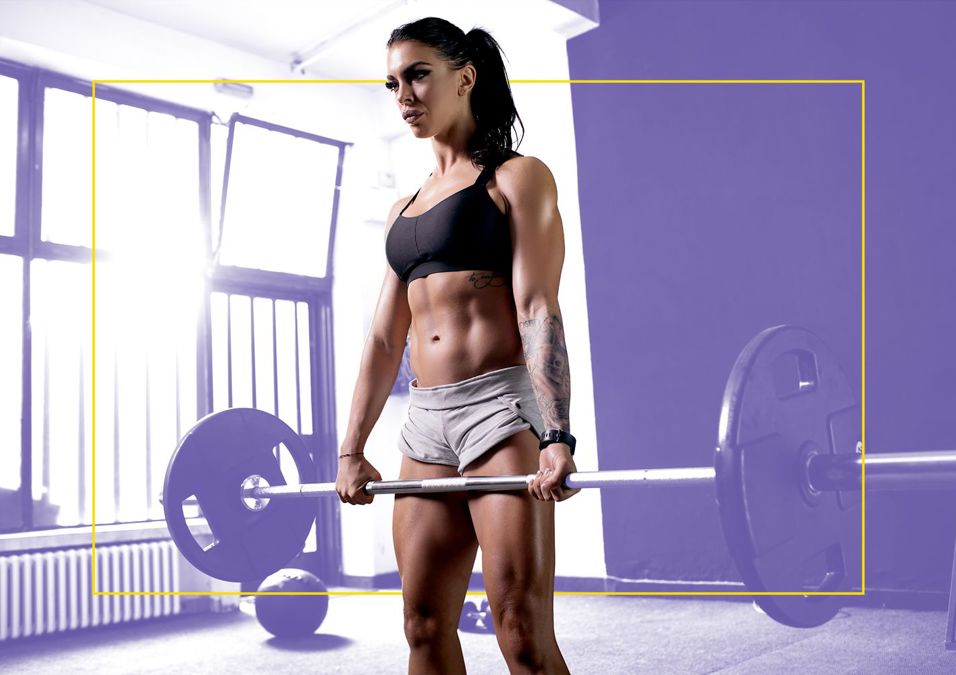Supercharge Your Workouts

SIGN UP FOR YOUR FREE DAY PASS TODAY!
Imagine fitting the same number of exercises into your workout while significantly reducing your total gym time.
That's the promise of supersets—a straightforward technique designed to make your workouts more efficient.
By combining two different exercises back-to-back, supersets minimize rest breaks, explains fitness coach Rachel Trotta, CPT.
But there's more to it. "Supersets boost muscular endurance and help you burn calories more effectively," says Brittany Watts, CPT, head coach at Tone House in New York City.
This is why both Watts and Trotta use supersets with clients, whether they're short on time or aiming to build muscle.
What is a Superset?
"A superset involves performing one exercise immediately followed by another without resting in between," says Riley O’Donnell, CPT, instructor at Fhitting Room in New York City.
Instead of doing multiple sets of one exercise and resting in between, you pair two exercises. You rest only after completing both, effectively cutting your rest time in half.
The exercises chosen for each pair are crucial. In a superset, the two exercises target opposing muscle groups, explains Watts.
For example, you might do biceps curls followed by triceps kickbacks, giving one muscle group a break while working the other.
Supersets are often confused with compound sets. In a compound set, you group exercises targeting the same muscle group, like triceps kickbacks followed by overhead triceps extensions, says Watts.
Who Should Do Supersets?
Supersets are great for anyone looking to increase strength, says O’Donnell.
Those accustomed to cardio might find they enjoy strength training more with supersets due to the reduced downtime.
The minimal rest periods also make supersets ideal for weight loss, says Watts, as they keep you moving and burning calories throughout your workout.
Finally, if you're always pressed for time, supersets can save you so much time you'll never look back.
Benefits of Supersets
O’Donnell and Watts outline several advantages of incorporating supersets into your workouts:
Quicker Workouts
Supersets allow one muscle group to rest while working the opposing group, eliminating idle time.
This enables you to either fit in more exercises during your usual workout time or finish earlier.
More Enjoyable Workouts
Variety makes workouts more engaging. Instead of repeating the same move, supersets keep things interesting, says O'Donnell.
Increased Strength
Studies suggest that supersets can cut down on workout time without compromising effectiveness.
For instance, a study in The European Journal of Applied Physiology found similar results.
Better Endurance
"Supersets are great for improving endurance and increasing muscle mass," says Watts.
Moving straight into your next set challenges your body to work through fatigue, enhancing endurance.
Higher Calorie Burn
Strength training with supersets increases calorie burn during and after your workout compared to traditional resistance training, according to a study in the Journal of Strength and Conditioning Research.
Common Types of Supersets
Depending on your goals, here are a few types of supersets to try:
Upper Body, Lower Body Supersets
Pairing exercises that target different body parts helps gain aerobic benefits. For instance, you can pair squats with push-ups in a full-body workout, suggests Trotta.
Direction-Alternating Supersets
Coordinate exercises that move body parts in opposite directions. For example, pair squats with kettlebell swings to work different aspects of the lower body, explains Trotta.
Giant Supersets
Add a third exercise to your superset. For instance, group squats, push-ups, and hip bridges together.
Pro Tip
At the gym, "create a superset area by bringing all necessary equipment together," suggests Trotta.
How to Pair Exercises in a Superset
O’Donnell recommends pairing push and pull moves for the upper body and hip- and knee-dominant exercises for the lower body.
Example Pairings:
· Upper Body: Chest press with bent-over row, push-ups with pull-ups
· Lower Body: Deadlift with squat, hamstring curl with leg extension
Annie Cooper, CPT, founder of Tuneintofitness, shares her favorite superset pairings:
· Legs: Goblet squats with RDL
· Shoulders: Arnold press with reverse flys
· Arms: Triceps rope pushdown with alternating hammer curls
· Glutes: Barbell hip thrusts with psoas crunch
· Chest to Lats: Dumbbell chest press with single-arm cable lat pulldowns
Incorporating Supersets into Your Routine
Transform your current strength training moves into supersets by pairing exercises effectively.
Your Superset Workout Strategy:
· Building Muscle: 8-12 reps per exercise, suggests O'Donnell.
· Pure Strength: 5-8 reps per exercise.
· Intensity: Limit rest between supersets for more intensity. Otherwise, rest for 30-90 seconds after completing both exercises.
· Cardio: Include high-intensity moves like kettlebell swings, med ball slams, or box jumps between supersets, recommends O’Donnell.
Are There Risks with Supersets?
Supersets are generally safe, says Trotta. However, fatigue can compromise form and increase injury risk. Avoid high-coordination moves like burpees when fatigued.
For high-intensity finishers, opt for simpler movements like cycling or rowing sprints instead of complex strength moves.
Common Superset Mistakes to Avoid
While supersets are generally beneficial, their effectiveness can be compromised if not planned and executed correctly. Here’s how to do them right, according to experts:
Maxing Out on Exercises
Just like performing a complex movement when you're fatigued can increase your risk of injury, lifting too heavy can do the same.
'That's a quick way to get injured,' explains Watts. 'If you're attempting a maximum load for a lift, focus solely on that lift.
Trying another maximum immediately afterward could compromise your form and lead to injury.' In other words, don't try to squat as much as possible and then do the same for a deadlift right after.
Overemphasizing Reps
Work with a weight that is challenging yet manageable for your usual number of reps (around eight to 12).
'The goal shouldn’t be the total number of reps,' says O’Donnell. 'Instead, aim to feel a burnout by the end of the entire superset.'
Source: style
The opinions shared in the GymNation blog articles are solely those of the respective authors and may not represent the perspectives of GymNation or any member of the GymNation team.
GET YOUR FREE TRIAL TODAY
















































































